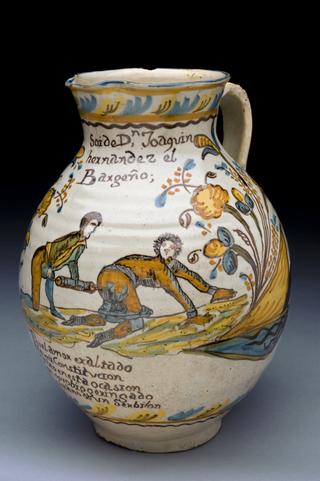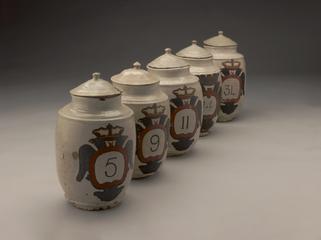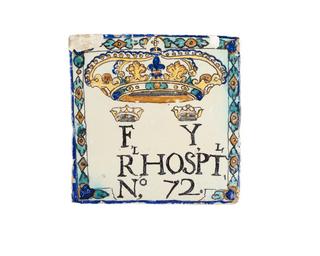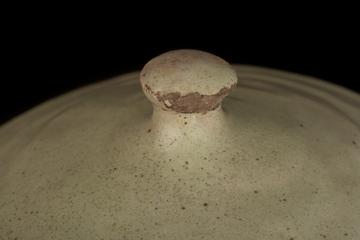






Tin glazed earthenware drug jar, with portraits, used for fine mustard, Sicilian, 17th century
Mustard was little used as an ingredient for medical preparations. It was generally considered to be flavouring for food. But mustard seeds were sometime prescribed for epilepsy and drowsiness. When the crushed seeds were mixed with flour, warm water or alcohol, and heated, a mustard plaster was formed. Mustard plasters were still commonly used in the 1800s as a counter-irritant.
The religious figure is St Francis of Assisi (1181-1226), the founder of the Franciscan Order in 1209. Here he is shown with the wounds of the stigmata. His stigmata, which are said to have appeared in 1224, were the first recorded instance of the phenomenon.
Details
- Category:
- Medical Ceramic-ware
- Collection:
- Sir Henry Wellcome's Museum Collection
- Object Number:
- A42579
- Materials:
- earthenware (tin glazed)
- Measurements:
-
overall: 188 mm 214 mm, 3.21kg
- type:
- drug jar
- credit:
- Robinson and Fisher


